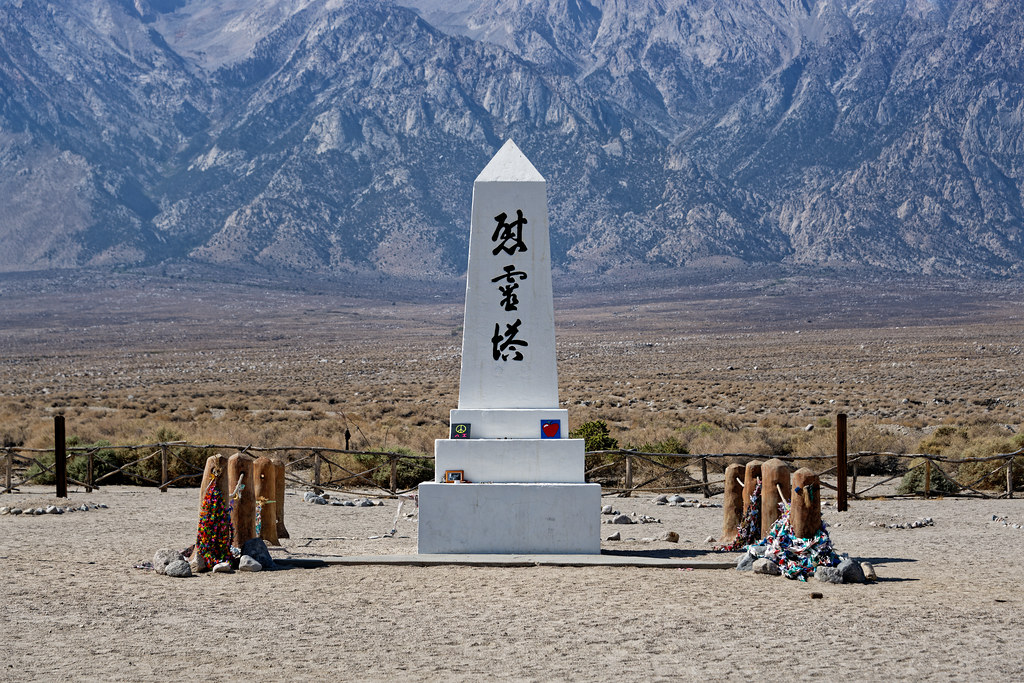#Manzanar National Historic Site
Text

Fringe, Manzanar National Historic Site
Photo © copyright by Chuck Kimmerle.
42 notes
·
View notes
Text
Living in B & W
.

Brian Griffin
::

Eric Droussent - Summer Skates
::

Chuck Kimmerle - Bedside, Manzanar National Historic Site
::

Ansel Adams - Nasturtiums
::
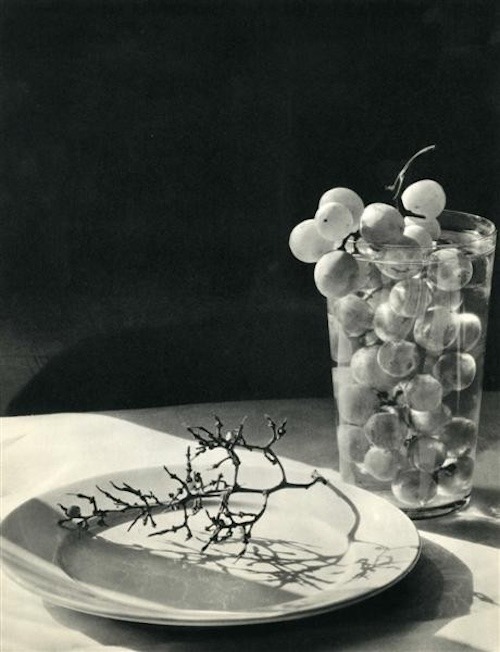
Emmanuel Sougez
::

Michel Rajkovic
::

Clarence John Laughlin - The Eye That Never Sleeps
::
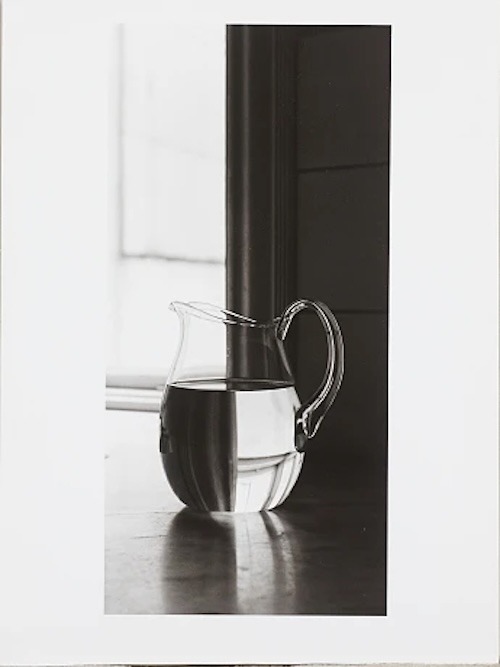
Sten Didrik Bellander
::
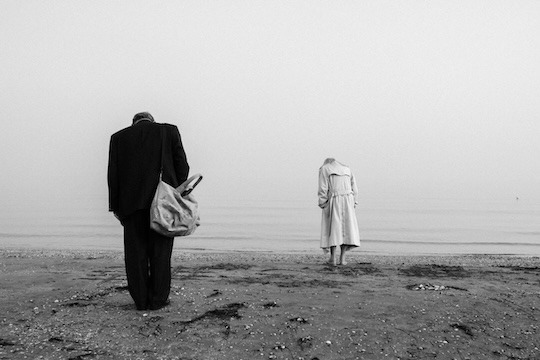
Pier Andrea Perini - Lido di Venezia
::


unknown - shipping containers
::

Elaine Ling - Havana
::

Arnold Newman - Yasuo Kuniyoshi
::

Galina Lukyanova - House, ca. 1982
::

Yasuhiro Ishimoto
::
5 notes
·
View notes
Text

I've also been reading a lot of graphic novels by Asian American artists/writers/popular figures. Two that I've really loved are "American Born Chinese" by Gene Luen Yang, and "They Called Us Enemy" cowritten by George Takei, Justin Eisinger, and Steven Scott. It was illustrated by Harmony Becker.
"American Born Chinese" follows three separate stories: a contemporary retelling of the story of Sun Wukong, the Monkey King; the life of 2nd generation Chinese immigrant Jim Wang; and the sitcom-esque story of "all-American" Danny and his cousin Chin-Kee, who's design is based on racist depictions of Chinese people in popular media. At the end of the story, all three stories come together in a hard-hitting examination of internalized racism.
"They Called Us Enemy" is an autobiography about actor and activist George Takei's childhood experience as a young boy in the WWII Japanese Internment Camps. Takei is most widely known for his role as Hikaru Sulu in Star Trek: The Original Series. The graphic novel gives personal insight into the injustice that the Japanese Americans faced as a result of the anti-Japanese sentiment that took hold of America in the wake of Pearl Harbor.
This story was particularly interesting to me, as my grandmother was also interned in these same camps, though in a different location that Takei was. I also had the fortune of visiting both the Manzanar National Historic Site, which was where Takei was interned, as well as the Japanese American National Museum, which Takei founded.
3 notes
·
View notes
Video
Manzanar Cemetery Monument by Mark Stevens
Via Flickr:
While taking in views of the landscape present in the Manzanar National Historic Site with a view looking to the southwest. This is of the Manzanar Cemetery and monument with a mountain backdrop of Mount Williamson.
#Alabama Hills#Alabama Hills National Scenic Area#Azimuth 246#Blue Skies#California and Oregon Road Trip#Concentration Camp#Day 2#Desert#Desert Landscape#Desert Mountain Landscape#Desert Plant Life#DxO PhotoLab 5 Edited#Hillsides#Internment Camp#Japanese American Incarceration#Japanese Internment Camp#Landscape#Landscape - Scenery#Looking SW#Manzanar#Manzanar Cemetery#Manzanar Cemetery Monument#Manzanar National Historic Site#Monument#Monument at Manzanar Cemetery#Mount Whitney Group#Mount Williamson#Mountain Peak#Mountains#Mountains in Distance
2 notes
·
View notes
Text
Kango Takamura - an uncollected graphic novel
For the past few years, I have been volunteering at Manzanar National Historic Site with my family. We usually stay in the town of Independence, which has an incredible little museum, The Eastern California Museum.
When I was there in May, I was taken by the watercolors made by Kango Takamura. He was incarcerated at Manzanar and made watercolors that depicted the administrative life of the camp,…

View On WordPress
1 note
·
View note
Text
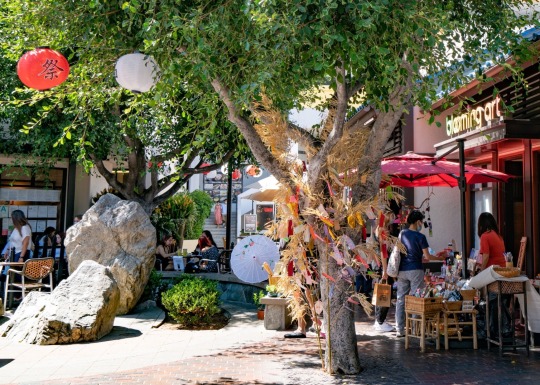
Shops and restaurants in Los Angeles’s Little Tokyo keep alive the history of the city‘s Japanese American community. Photograph By Aaron Perez, Bauer-Griffin/GC Images/Getty Images
These Little-known Sites Help Families Connect To Asian American History
From Chinese railroad workers in Utah to Filipino shrimpers in Louisiana, here are tales of immigration, struggle, and belonging.
— By Lisa Kwon | May 6, 2021
Tie Sing knew how to make a meal to remember. The Chinese American backcountry cook once prepared a dinner for U.S. Geological Survey explorers that was so memorable the mapmakers lavishly detailed each course—soup, trout, fried potatoes, string beans, fresh bread, hot apple pie, coffee—in reports about their two-week expedition through what is now Yosemite National Park.
But not many people remember Sing—and many other Asian American workers before and after him, who remain footnotes in history books and curricula. Yenyen Chan, a park ranger at Yosemite, hopes to change that. She helps interpret stories of Chinese history, such as Sing’s, in the park, noting that “Asian Americans have been in this country and contributed for a very long time.”
From national parks to ethnic neighborhoods, in-person visits (once it’s safe and destinations re-open) give students well-rounded experiences to bring into their classrooms. Anantha Sudhakar, a professor in the Asian American Studies department at San Francisco State University, says that “it’s become really important for families to complement a child’s school learning” with personal experiences.

Backcountry cook Tie Sing (standing) poses with the Mather Mountain Party during a 1915 expedition that laid the groundwork for national parks. Yosemite’s Sing Peak is named after him. Photograph By DR. Gilbert H. Grosvenor National Geographic Image Collection
Michelle Magalong, president of Asian and Pacific Islander Americans in Historic Preservation, says she feels more prepared than ever to welcome people who want to learn. “History matters when it’s deeply rooted in what is relevant and happening today,” she says.
As families start planning summer travel, these important sites across the United States can help broaden perspectives on American history and heritage.
Parks and Landmarks
At national parks, families can gain historical insight by getting outdoors and getting active. “Many families really like to have their kids exposed to as much as possible with hikes or park service-led programs,” says Chan, who often sees families return several times for different history walks through Yosemite.
This summer, Yosemite opens an exhibit about the Chinese workers who helped build the infrastructure for the national park. More experienced adventurers can embark on a challenging off-trail hike to Sing Peak to learn more about the cook’s legacy.
After diving into the histories of Chinese railroad workers at Utah’s Golden Spike National Historical Park, travelers can take selfies at the Chinese Arch, which honors the workforce that shoveled, drilled, and hammered their way through the Sierra Nevada and Great Basin regions to create the first transcontinental railroad.
The stories of Japanese American families incarcerated during World War II are explored at former internment camps such as Minidoka, in Idaho, and Manzanar, in California. Lesser known as a site of internment is Hawai’i Volcanoes National Park, where more than 100 people were detained at a military camp inside the park.
Even while their families remained imprisoned, many Japanese Americans served in the U.S. military during the war. In Washington, D.C., travelers can learn about their contributions at the Japanese American Memorial to Patriotism During World War II, centered around a bronze sculpture of two cranes.
Neighborhoods For Food and Festivals
To find the neighborhoods built and vitalized by Asian American groups, such as the nation’s Chinatowns, “follow the labor,” says Jenny Banh, a professor in Asian American Studies at California State University, Fresno. “Follow the Asian labor and you will find the richest stories.”


Left: A family has lunch at the Hmong Village shopping center, one of two Hmong farmers markets in St. Paul, Minnesota, on Aug. 3, 2019. Some 66,000 Hmong live in the St. Paul-Minneapolis area—the largest Hmong population in the world. Right: On Aug. 3, 2019, a vendor puts out fresh vegetables at the Hmongtown Marketplace, which houses more than 125 businesses. Today’s Hmong residents can trace their lineage to refugees who fled Laos in the 1970s. Photographs By Jack Kurtz, Zuma Press/Alamy
Filipino fishermen who arrived in Louisiana in the mid-18th century established what some historians consider the first Asian settlement in the U.S., south of New Orleans. The village of Saint Malo once comprised houses built on stilts over swampland but was destroyed in a hurricane. The Filipino community’s contributions to Louisiana’s shrimping industry are now memorialized with plaques at the former locations of both Saint Malo and a later settlement, called Manila Village.
In St. Paul, Minnesota, foodie families can order stuffed chicken wings to eat while walking up and down the vibrant aisles of the Hmongtown or Hmong Village farmers markets. The Twin Cities is home to a thriving community of Hmong people with lineage that dates back to 1975, when refugees relocated to the area from their homelands in Laos, and eventually worked in agriculture.
An annual Sikh festival in Yuba City, California, home to one of the largest Sikh populations in the country, features decorative floats, a bazaar, and 200,000 free plates of hot meals to tens of thousands of attendees of all faiths. Now nicknamed the “Mini Punjab” of the U.S., Yuba City attracted the Sikh population with opportunities in farming and other agricultural jobs.

This photo depicts Joe Gow Nue and Co. Grocery and Meat Market in Greenville, Mississippi, in 1939. Chinese-owned grocery stores served Black communities when the region was more starkly segregated in the early 20th century. Mississippi Delta Chinese Heritage Museum preserves this history. Photograph By Maruon Post Wolcott Library of Congress
In Los Angeles’ Boyle Heights, indulge in a comforting sukiyaki bowl at Otomisan Restaurant, one of the last Japanese legacy businesses in the neighborhood. Boyle Heights was a haven for Japanese Americans after World War II, who struggled to find new homes due to racist neighborhood “covenants,” which restricted the areas where people of color could live in Los Angeles.
A small community of Korean-Uzbeks—or Koryo-saram—thrives in the Brighton Beach neighborhood of Brooklyn, New York. Restaurants like Cafe Lily keep the culture alive with its fusion of Central Asian and Korean cuisine in dishes such as kuksi (a cold noodle soup). The community has its roots in Central Asia, where Koreans who had been living in Russia since the early 19th century were deported during Joseph Stalin’s reign. Today, Brighton Beach is home to many Koryo-saram, given its notable population of Russian-speaking immigrants.
Art Spaces and Museums
Galleries and museums—from the Smithsonian’s National Museum of Asian Art to the Wing Luke Museum in Seattle—often have public programs geared to families that give context to the art hanging on the walls or the objects in cases.

The Wing Luke Museum, in Seattle’s International District, is the only community-based museum in America dedicated to the history of Asian Pacific Americans. It’s a designated historic site and a National Park Service affiliate. Photograph By Paul Christian Gordon, Alamy
The Asian Arts Initiative, in Philadelphia, organizes a summer camp and workshops to engage children in the creative process of visual arts and performances.
Teens can take narrative prose workshops at Kearny Street Workshop in San Francisco, one of the oldest organizations that work with Asian American artists in multidisciplinary fields.
Kids and teens who are fascinated by architecture may enjoy walking through the expansive George Nakashima Woodworker Complex, in New Hope, Pennsylvania, to marvel at the buildings that the renowned architect and furniture designer had a hand in creating.

Two people interact with an exhibit at the Hawai’i Army Museum Society, which recounts the state’s military history, from before Christopher Columbus's day to the Vietnam War. Photograph By Jeffrey Greenberg, Universal Images Group/Getty Images
Art can also be right outside your door. For Freedoms has launched its billboard campaign throughout the U.S., showcasing work by Asian or Pacific American artists.
Opportunities to learn about Asian American culture and history are everywhere, but ultimately, cultural literacy starts with individual relationships, says Pritpal Kaur, education director of the Sikh Coalition. “Getting an authentic review of our experience starts with one-on-one conversations.”
1 note
·
View note
Text
References
Hirasuna, Delphine. TheArtofGaman. Ten Speed Press, 2013.
“Japanese American Life During Internment (U.S. National Park Service).” NPS.GovHomepage(U.S. National Park Service), https://www.nps.gov/articles/japanese-american-internment-archeology.htm. Accessed 30 Mar. 2023.
Katz-Harris, Felicia. “The Art of Gaman :: Department of Cultural Affairs Media Center :: Press Releases.” DepartmentofCulturalAffairsMediaCenterMuseumofNewMexicoMediaCenter, https://media.newmexicoculture.org/release/222/the-art-of-gaman. Accessed 30 Mar. 2023.
“Manzanar National Historic Site.” NPS.GovHomepage(U.S.NationalParkService), https://www.nps.gov/museum/exhibits/manz/pastimes.html. Accessed 30 Mar. 2023.
Muto, David. “The Colors of Japanese Internment | The New Yorker.” TheNewYorker, The New Yorker, 19 Feb. 2017, https://www.newyorker.com/culture/photo-booth/the-colors-of-japanese- internment.
“Set of Small Wooden Carving, Geta | National Museum of American History.” National Museum of AmericanHistory, https://americanhistory.si.edu/collections/search/object/nmah_1804792. Accessed 30 Mar. 2023.
“The Art of Dignity: Making Beauty Amid the Ugliness of WWII Japanese American Camps | Collectors Weekly.” Collectors Weekly, https://www.collectorsweekly.com/articles/the-art-of-wwii- japanese-american-camps/. Accessed 30 Mar. 2023.
Ukai, Nancy. “Mickey Mouse Geta (Japanese Sandals) - 50 Objects.” 50 Objects, https://50objects.org/object/mickey-mouse-geta-japanese-sandals/. Accessed 30 Mar. 2023.
Weekly, Lisa Hix, Collectors. “How Japanese American Internment Camp Prisoners Used Art to Survive during WWII - Local News Matters.” Local News Matters, 8 July 2020, https://localnewsmatters.org/2020/07/08/how-japanese-american-internment-camp-prisoners-relied-on- artwork-to-survive-during-wwii/.
Weglyn, Michi. YearsofInfamy. William Morrow, 1976.
0 notes
Photo
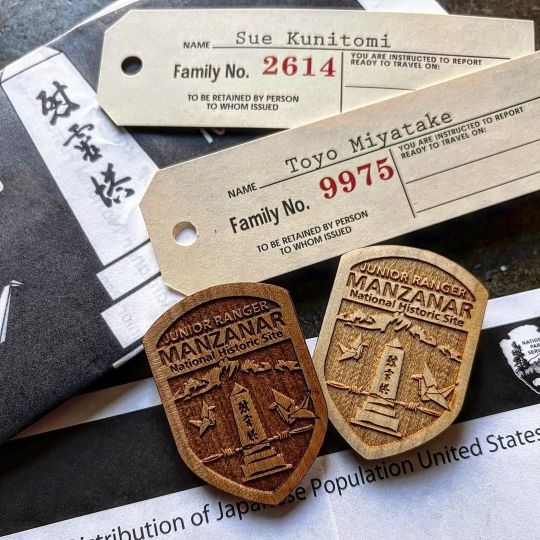
Manzanar National Historic Site #manzanarnationalhistoricsite #nationalpark #dreamamerica #edreamamerica #dreamamericausa #california #roadtripcalifornia #juniorranger #juniorrangerbadge #juniorrangerprogram #juniorrangerbanner (at Manzanar National Historic Site) https://www.instagram.com/p/Cj1b3jxvNgX/?igshid=NGJjMDIxMWI=
#manzanarnationalhistoricsite#nationalpark#dreamamerica#edreamamerica#dreamamericausa#california#roadtripcalifornia#juniorranger#juniorrangerbadge#juniorrangerprogram#juniorrangerbanner
0 notes
Link
By TERESA WATANABE
Rose Matsui Ochi, a trailblazing Los Angeles attorney who tapped far-flung political networks from City Hall to Congress in her fierce advocacy of civil rights, criminal justice reform and Japanese American causes, has died at 81.
Ochi died Dec. 13 at a local hospital after being diagnosed with a second bout of COVID-19, which exacerbated existing health problems, her husband, Thomas Ochi, said.
Ochi broke barriers as the first Asian American woman to serve as a Los Angeles Police Commission member and as an assistant U.S. attorney general. She advised L.A. Mayors Tom Bradley and James Hahn on criminal justice, served on President Carter’s Select Commission on Immigration and Refugee Policy and worked with President Clinton on drug policy and race relations.
But she particularly cherished her contributions to the successful campaigns to win recognition and redress for the mass incarceration of 120,000 people of Japanese descent during World War II — including her and her family, who were uprooted from their Boyle Heights home and imprisoned at the Rohwer detention camp in Arkansas after Japan bombed Pearl Harbor in 1941.
She would play pivotal roles in helping the community win a federal apology and monetary payments to camp survivors in 1988 and secure approval of the Manzanar camp in the Owens Valley as a national historic site in 1992.
Ochi was just 3 years old when she was incarcerated but it fired her lifelong commitment to fight for the underdog, said William T. Fujioka, a close friend and former Los Angeles County chief executive. “The injustice of the relocation burned something into her soul,” he said.
In a 2014 interview, Ochi recalled how racism shaped her. During a yearlong stay in Nevada after the war, she was made to wash her mouth out with soap by a teacher in front of the class for speaking Japanese, and soldiers threw snowballs and directed racial epithets at her, she said.
“Somehow I learned that I’m not a real American. I’m an outsider,” Ochi said in the interview with the UCLA Library Center for Oral History Research. “And instead of feeling like you’re ostracized, I just felt very strong, and I think over the years I was allowed to take on unpopular causes or stand up for people that are being beaten up ... because I was an outsider, and it’s something that I embrace and I like.”
Read more...
https://www.latimes.com/obituaries/story/2021-01-05/rose-ochi-trailblazer-civil-rights-japanese-american-causes-dies
13 notes
·
View notes
Text

Bedside, Manzanar National Historic Site
Photo © copyright by Chuck Kimmerle.
31 notes
·
View notes
Photo
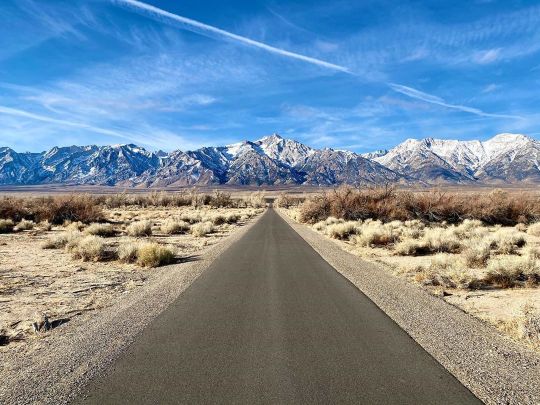
Tour Route, Manzanar War Relocation Center National Historic Site, CA. . . . . . . . . . . . #california #CAStateParks #VisitCalifornia #naturalcalifornia #wildcalifornia #CaliforniaCaptures #wonderlustcalifornia #landscape #alltrails #modernoutdoors #roamearth #rediscovertheearth #ViewBug #earthfocus #TLPicks #OurPlanetDaily #lonelyplanet #lpfanphoto #sonyalpha #manzanar (at Manzanar National Historic Site) https://www.instagram.com/p/B8EacYsFEXV/?igshid=1n6xmw2n0fps0
#california#castateparks#visitcalifornia#naturalcalifornia#wildcalifornia#californiacaptures#wonderlustcalifornia#landscape#alltrails#modernoutdoors#roamearth#rediscovertheearth#viewbug#earthfocus#tlpicks#ourplanetdaily#lonelyplanet#lpfanphoto#sonyalpha#manzanar
59 notes
·
View notes
Text

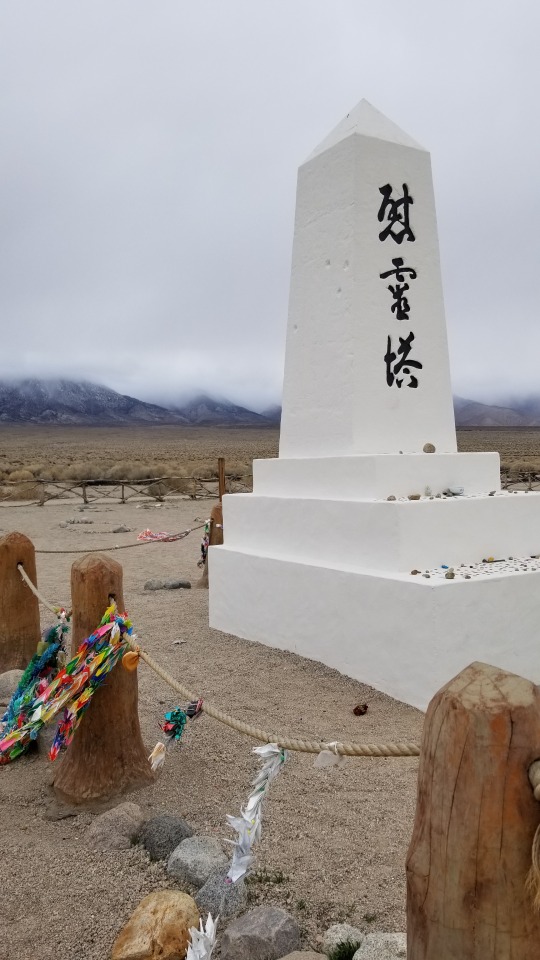



On the last leg of my trip this past weekend, we stopped at the National Historic Site of the Manzanar internment camp. This was one of several locations in the United States where Japanese Americans were incarcerated during WW II. Make no mistake, they were prisoners.
It was a blisteringly cold day. Windy and overcast. It was difficult to walk around.
What struck me most about the site was how little remains of the place where more than 120,000 Americans were held. I included a photo of the scale model that shows the size of the camp. The photo just above it is the vast emptiness that's there now. There are remnants of the people who lived here---gardens that have been unearthed through restoration efforts, concrete foundations, front steps leading to nowhere---but it is mostly empty.
The museum is small but powerful. It appears to have been completed perhaps in 2003, and the influence of that moment in time shows in part of the exhibit. But while history has changed around this place, its lessons remain. Important, powerful, painful lessons.
I placed a stone on the cemetery monument to mark my presence. You've probably seen the monument in images before. The kanji, if I have it correctly, reads "soul consoling tower."
21 notes
·
View notes
Video
Respectfully Approaching History (Manzanar National Historic Site) by Mark Stevens
Via Flickr:
While taking in views of the landscape present in the Manzanar National Historic Site with a view looking to the southwest. This is of the Manzanar Cemetery and monument with a mountain backdrop of Mount Williamson.
#Alabama Hills#Alabama Hills National Scenic Area#Azimuth 245#Blue Skies#California and Oregon Road Trip#Concentration Camp#Day 2#Desert#Desert Landscape#Desert Mountain Landscape#Desert Plant Life#DxO PhotoLab 5 Edited#Hillsides#Internment Camp#Japanese American Incarceration#Japanese Internment Camp#Landscape#Landscape - Scenery#Looking SW#Manzanar#Manzanar Cemetery#Manzanar Cemetery Monument#Manzanar National Historic Site#Monument#Monument at Manzanar Cemetery#Mount Whitney Group#Mount Williamson#Mountain Peak#Mountains#Mountains in Distance
3 notes
·
View notes
Photo
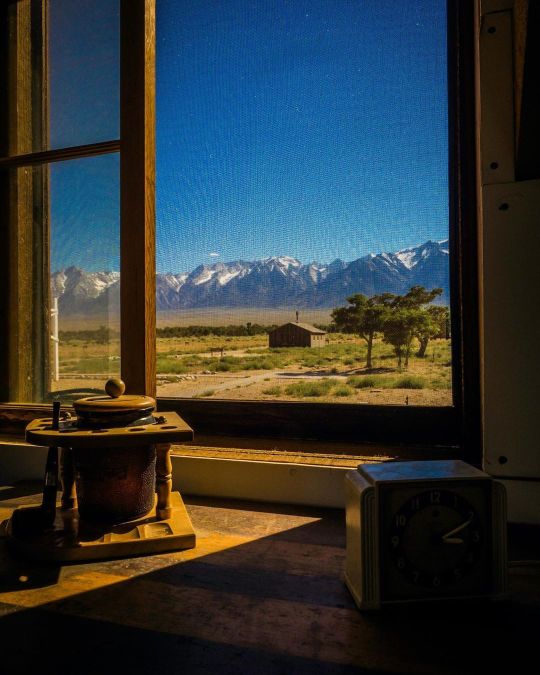
"Manzanar is the site of one of ten American concentration camps, where more than 120,000 Japanese Americans were incarcerated during World War II from March 1942 to November 1945.⠀ ⠀ Manzanar means "apple orchard" in Spanish. The Manzanar National Historic Site, which preserves and interprets the legacy of Japanese American incarceration in the United States, was identified by the United States National Park Service as the best-preserved of the ten former camp sites.⠀ ⠀ Long before the first of the Japanese American detainees arrived in March 1942, Manzanar was home to Native Americans, who lived mostly in villages near several creeks in the area. Ranchers and miners formally established the town of Manzanar in 1910, but it had been abandoned by 1929, after the City of Los Angeles purchased the water rights to virtually the entire area. As different as these groups were, their histories displayed a common thread of forced relocation.⠀ ⠀ Since the last of those incarcerated left in 1945, former detainees and others have worked to protect Manzanar and to establish it as a National Historic Site to ensure that the history of the site, along with the stories of those who were incarcerated there, is recorded for current and future generations. The primary focus is the Japanese American incarceration era, as specified in the legislation that created the Manzanar National Historic Site. The site also interprets the former town of Manzanar, the ranch days, the settlement by the Owens Valley Paiute, and the role that water played in shaping the history of the Owens Valley." - wikipedia⠀ ⠀ 📍: Manzanar National Historic Site, CA⠀ 📅 : June 2017⠀ ⠀ #unitedbynature⠀ #IBrakeForBrownSigns ⠀ #nationalparkgeek ⠀ #findyourambassador⠀ (at Manzanar National Historic Site) https://www.instagram.com/p/CBvsHBNgtox/?igshid=1bwlp91qkxzyq
2 notes
·
View notes
Photo

Today in #history: #OTD, April 1, 1942, the first Japanese arrived Manzanar War Relocation Center in #California after being forced from their homes under Executive Order 9066. The residential area at the Manzanar War Relocation Center was about one square mile and held a population of 10,000. In an effort to make the desert landscape feel more welcoming, the incarcerees built gardens and water features, which are still present in various states of restoration today. After the site closed in 1945, the buildings were either moved, sold for scrap, or demolished. Replicas of two barracks, a mess hall, and a women's latrine have been built at the site on their original foundations. An informative museum is located in the original auditorium building and the cemetery at the rear of the property help put the site into context. Today the site is preserved and interpreted as part of the @NationalParkService as @manzanarnps. #ca #cahistory #nationalpark #nps #nps103 #FindYourPark #goparks #ushistory #americanhistory #nationalparkgeek #travelblog #travelblogger #explore #blog #blogger #manzanar #nationalhistoricsite #wwii #worldwarii #sierranevada #nrhp #nationalparkservice #gardens #optoutside #smallparksaturday #todayinhistory (at Manzanar National Historic Site) https://www.instagram.com/p/B-dXhyIjU__/?igshid=elnslvba2gaz
#history#otd#california#ca#cahistory#nationalpark#nps#nps103#findyourpark#goparks#ushistory#americanhistory#nationalparkgeek#travelblog#travelblogger#explore#blog#blogger#manzanar#nationalhistoricsite#wwii#worldwarii#sierranevada#nrhp#nationalparkservice#gardens#optoutside#smallparksaturday#todayinhistory
1 note
·
View note

